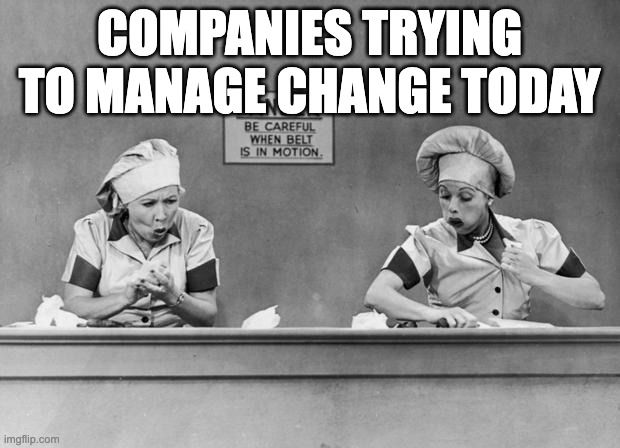The Theory of Social Entanglement, Part 1
- Rob Caldera
- Jul 18, 2018
- 3 min read

In order to thrive in an exponential world, companies need to become fluid, emergent, responsive organisms that can move faster than the rate of change. In my last post, I likened this organizational connectivity and near instantaneous ability to respond to the characteristics of entangled particles, calling it social entanglement to include the human element. This post and the subsequent parts will expand on this idea.
Obtaining a state of social entanglement requires a commitment, first and foremost, to embracing new ways of working and operating as a company. It’s about throwing out the old playbook and trying a new one that will seem almost foreign (one that you will need to create). This doesn’t mean starting from scratch and it doesn’t mean throwing out the baby with the bath water. Many of the basic tasks that organizations need to perform to “keep the lights on” would remain unaffected (assuming they work well). But the higher level activities from which most value is derived, would likely need to take a page from the new playbook.
What can organizations do to move in this direction? There are lots of fantastic ideas, models, and new ways of working out there that can help transform organizations to ones that can thrive in an accelerated age. There is no lack of thought leadership in this area (if you know where to look). I am not looking to reinvent the wheel with yet another way either. Instead, I want to take a bird’s eye view of how some of the existing concepts out there can come together to form a blueprint for building a future-ready organization (whatever that future turns out to be).
I see three key levers of change that organizations need to consider:
Adopting a new leadership paradigm
Building a connected culture
Fostering personal adaptability
Each of these contain multiple elements (various strategies, programs, methodologies). Individually, each lever can make positive impacts on an organization’s evolution, but combined can be a powerful formula for enabling the transformational shift described above and in the previous post. The introduction of A.I. on top of these, can then be used to super-power the organization, rather than disrupt it. The image below highlights how these three areas intersect, along with some of the key programs/ideas that they're comprised of.

I will explore these three areas over the course of a three-part series, starting with:
1) Adopt a New Leadership Paradigm
Traditionally, the role of leadership is one of command – make the decision, bark out the order, and ensure it cascades down with no deviance. Business leadership today is of course a lot more complex. Many leaders (but not enough) already know they need to be inspiring, they need to do more listening, and should act more like a symphony conductor than a general (although even the military is changing their leadership style these days), but this still doesn’t go far enough. The speed at which organizations need to shift and respond in a Future of Work climate, requires a new leadership paradigm.
Author and speaker Ayelet Baron calls it 21st century leadership. These are leaders who are “generous. compassionate and amazing storytellers. They have a way of building community and bringing people together to co-create solutions...The 21st century leader goes into the world and breaks down walls by bringing communities together in conversations.”* And these leaders can come from anywhere in the organization, regardless of title. However, it’s essential for the person at the top to have this mindset.
Essentially, the new paradigm is about leaders learning to be more facilitative; to serve as a “Coach-in-Chief” to guide and nurture their people and then get out of the way so that those people – all throughout the company – can make the quick decisions and take the necessary actions to move the organization forward. Only the very top-level decisions would remain for the leader(s) and even those can and should be informed by feedback coming from all roles.
A key element of this new paradigm is that leaders, just like the business itself, need to be able to adapt to the changing environment. “Adaptive Leadership” as it’s called, is about leaders embracing uncertainty (a rare trait today) and adapting readily to new, potentially unorthodox approaches. Adaptive leaders manage through influence, empathy, and shared purpose, not by power. They encourage experimentation (meaning it’s ok to fail), and focus on sustainable success, not unmitigated growth.
Leaders need to be coached and educated on how to become adaptive leaders (formal training programs are out there).
As important as a new style of leadership will be, organizations must also enable its people to communicate and interact with as least friction as possible. Building this connected culture is the focus of Part 2 of this series.
* From “Are you a 21st Century Leader?” by Ayelet Baron, HuffPost, 9/9/15






Comments